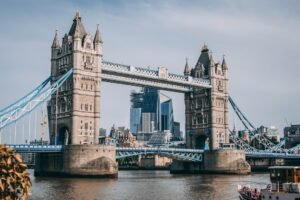

15 Ways to Discuss Environmental Issues in Norwegian
Norway, known for its stunning natural landscapes and commitment to sustainability, faces a unique set of environmental challenges. From the melting glaciers in the Arctic to the pollution of its pristine fjords, Norway’s ecosystems are under threat. However, the country has a long history of environmentalism and a strong commitment to protecting its natural resources. Environmental awareness plays a crucial role in addressing these challenges and ensuring a sustainable future for Norway and the planet as a whole.
Table of Contents
ToggleKey Takeaways
- Environmental awareness is crucial for preserving Norway’s natural beauty and resources.
- Climate change is already impacting Norway’s ecosystems, with melting glaciers and changing weather patterns.
- Government policies play a key role in protecting the environment, such as Norway’s commitment to reducing greenhouse gas emissions.
- Sustainable living practices, such as recycling and reducing energy consumption, can help create a greener Norway.
- Pollution is harming Norway’s wildlife and natural resources, including its fish populations and fjords.
- Renewable energy sources, such as hydropower and wind power, offer a promising future for Norway’s energy needs.
- Education is essential for creating a culture of environmental consciousness and inspiring future generations to protect the planet.
- Consumerism and overconsumption are contributing to environmental degradation, and individuals can make a difference by making conscious choices.
- Global cooperation is necessary to address environmental issues, such as reducing carbon emissions and protecting biodiversity.
- Innovative solutions, such as carbon capture and storage technology, can help address environmental challenges in Norway and beyond.
The Importance of Environmental Awareness in Norway
Norway has a rich history of environmentalism, dating back to the early 20th century when concerns about deforestation and pollution first emerged. Over the years, the country has implemented various policies and initiatives to protect its natural resources and promote sustainable practices. Today, environmental awareness is deeply ingrained in Norwegian society, with a strong emphasis on conservation and sustainable living.
The current state of environmental awareness in Norway is quite impressive. The country consistently ranks among the top nations in terms of environmental performance and sustainability. Norwegians are well-informed about environmental issues and actively engage in practices that minimize their impact on the environment. This includes recycling, using public transportation, and reducing energy consumption.
The benefits of environmental awareness are numerous. By being aware of the impact of their actions on the environment, individuals can make informed choices that promote sustainability. This not only helps protect Norway’s ecosystems but also contributes to global efforts to combat climate change and preserve biodiversity. Additionally, environmental awareness can lead to innovation and the development of new technologies that address environmental challenges.
Understanding the Impact of Climate Change on Norway’s Ecosystems
Climate change poses significant threats to Norway’s ecosystems. The country is experiencing rising temperatures, melting glaciers, and changing precipitation patterns. These changes have far-reaching effects on biodiversity, wildlife habitats, and natural resources.
One of the most visible effects of climate change in Norway is the melting of glaciers. Glaciers are a vital source of freshwater and play a crucial role in regulating water supply and maintaining ecosystems. As glaciers melt, the availability of freshwater decreases, leading to water scarcity and affecting both human and animal populations.
Climate change also affects Norway’s forests and wildlife. Rising temperatures and changing precipitation patterns can disrupt ecosystems, leading to shifts in species distribution and loss of biodiversity. This can have cascading effects on the food chain and ecosystem functioning.
Addressing climate change is of utmost importance for Norway. The country has set ambitious targets to reduce greenhouse gas emissions and transition to a low-carbon economy. By investing in renewable energy, promoting energy efficiency, and implementing sustainable land-use practices, Norway aims to mitigate the impacts of climate change on its ecosystems.
The Role of Government Policies in Protecting the Environment
Norway has implemented a range of government policies to protect the environment and promote sustainability. These policies cover various areas, including energy, transportation, waste management, and conservation.
One example of a successful government policy is Norway’s carbon tax. Introduced in 1991, the carbon tax imposes a fee on greenhouse gas emissions from fossil fuels. This has incentivized industries to reduce their emissions and invest in cleaner technologies. The revenue generated from the carbon tax is used to fund renewable energy projects and climate change mitigation efforts.
Another successful policy is Norway’s commitment to electric vehicles (EVs). The government offers generous incentives for purchasing EVs, such as tax exemptions and free tolls. As a result, Norway has one of the highest rates of EV adoption in the world, reducing emissions from transportation and promoting sustainable mobility.
However, implementing environmental policies can be challenging. There may be resistance from industries that rely on fossil fuels or other unsustainable practices. Additionally, there may be economic considerations that make it difficult to transition to more sustainable alternatives. Overcoming these challenges requires strong political will, stakeholder engagement, and long-term planning.
Sustainable Living Practices for a Greener Norway
Sustainable living practices are essential for creating a greener Norway. These practices involve minimizing resource consumption, reducing waste, and promoting environmentally friendly behaviors.
One example of sustainable living in Norway is the emphasis on recycling. Norwegians have a strong culture of recycling, with separate bins for different types of waste and a high recycling rate. This helps reduce the amount of waste sent to landfills and conserves valuable resources.
Another example is the promotion of public transportation and cycling. Norway has invested in extensive public transportation networks, making it easy for people to commute without relying on cars. Additionally, the country has developed a comprehensive network of cycling paths, encouraging people to choose sustainable modes of transportation.
Sustainable living practices offer numerous benefits. They help conserve natural resources, reduce pollution, and minimize the carbon footprint. Additionally, they can lead to cost savings for individuals and communities by reducing energy consumption and waste generation.
The Effects of Pollution on Norway’s Wildlife and Natural Resources

Pollution poses significant threats to Norway’s wildlife and natural resources. The country faces various types of pollution, including air pollution, water pollution, and marine pollution.
Air pollution from industrial activities and transportation can have detrimental effects on both human health and ecosystems. It can lead to respiratory problems, cardiovascular diseases, and even premature death. Additionally, air pollution can harm vegetation and contribute to acid rain, which damages forests and aquatic ecosystems.
Water pollution is another major concern in Norway. Industrial discharges, agricultural runoff, and improper waste management can contaminate rivers, lakes, and coastal areas. This can harm aquatic life, degrade water quality, and affect human activities such as fishing and tourism.
Marine pollution is a significant issue in Norway due to its extensive coastline and reliance on marine resources. Pollution from oil spills, shipping activities, and plastic waste can harm marine ecosystems and threaten the survival of marine species. It can also impact the fishing industry, which is vital for Norway’s economy.
Efforts to reduce pollution in Norway include stricter regulations, improved waste management practices, and public awareness campaigns. The government has implemented measures to reduce emissions from industries and promote sustainable waste disposal. Additionally, there are ongoing efforts to clean up polluted areas and restore damaged ecosystems.
The Benefits of Renewable Energy Sources for Norway’s Future
Renewable energy sources offer numerous benefits for Norway’s future. The country has abundant natural resources, including wind, hydro, and solar power, which can be harnessed to generate clean energy.
Norway is a global leader in hydropower, with a significant portion of its electricity coming from hydroelectric plants. Hydropower is a renewable and reliable source of energy that does not produce greenhouse gas emissions. It also provides opportunities for energy storage and grid flexibility.
In recent years, Norway has also made significant progress in developing wind power. The country has vast offshore wind potential, and several wind farms have been constructed along the coast. Wind power offers a scalable and cost-effective solution for reducing reliance on fossil fuels and meeting renewable energy targets.
Solar power is another promising renewable energy source in Norway. Despite its high latitude, the country receives a considerable amount of sunlight during the summer months. Solar panels can be installed on rooftops and other suitable surfaces to generate electricity and reduce dependence on the grid.
The benefits of renewable energy are manifold. They include reduced greenhouse gas emissions, improved air quality, and increased energy security. Additionally, renewable energy can create jobs, stimulate economic growth, and promote technological innovation.
The Role of Education in Creating Environmental Consciousness
Education plays a crucial role in creating environmental consciousness among individuals and communities. By providing knowledge and raising awareness about environmental issues, education can empower people to make informed decisions and take action to protect the environment.
In Norway, environmental education is integrated into the national curriculum at all levels of schooling. Students learn about climate change, biodiversity, sustainable development, and other environmental topics. They also engage in hands-on activities and projects that promote environmental stewardship.
Environmental education goes beyond the classroom. Norway has a strong tradition of outdoor education, where students spend time in nature and learn about the environment through direct experience. This helps foster a deep connection with nature and a sense of responsibility for its protection.
The impact of education on environmental consciousness is significant. Studies have shown that individuals with higher levels of education are more likely to engage in pro-environmental behaviors and support environmental policies. By investing in education, Norway is creating a generation of environmentally conscious citizens who will contribute to a sustainable future.
The Impact of Consumerism on the Environment
Consumerism, characterized by the excessive consumption of goods and resources, has significant environmental impacts. The production, transportation, and disposal of consumer goods contribute to pollution, resource depletion, and greenhouse gas emissions.
In Norway, consumerism is a growing concern as the country experiences high levels of affluence and consumption. The demand for goods and services puts pressure on natural resources and contributes to waste generation.
Efforts to reduce consumerism in Norway include promoting sustainable consumption patterns and encouraging responsible purchasing decisions. This includes buying locally produced goods, choosing products with minimal packaging, and opting for durable and repairable items.
Additionally, there is a growing movement towards sharing economies and collaborative consumption. This involves sharing resources such as cars, tools, and housing, reducing the need for individual ownership and promoting resource efficiency.
Reducing consumerism not only benefits the environment but also promotes social well-being. It can lead to a more equitable distribution of resources, reduce income inequality, and foster stronger communities.
The Need for Global Cooperation to Address Environmental Issues
Environmental issues are global in nature and require global cooperation to be effectively addressed. Climate change, biodiversity loss, and pollution do not respect national borders and affect all countries, regardless of their level of development.
Global cooperation is essential for several reasons. First, environmental challenges are interconnected and require coordinated action to achieve meaningful results. For example, reducing greenhouse gas emissions in one country may be offset by increased emissions in another if there is no global agreement on emission reductions.
Second, developing countries often lack the resources and capacity to address environmental issues on their own. They need support from developed countries in terms of technology transfer, financial assistance, and capacity building.
Third, environmental issues have social and economic implications that go beyond national boundaries. For example, climate change can lead to displacement of populations, food insecurity, and conflicts over resources. These issues require collective action and cooperation to find sustainable solutions.
Examples of successful global cooperation include the Paris Agreement on climate change and the Convention on Biological Diversity. These international agreements bring together countries from around the world to set targets, share best practices, and mobilize resources for environmental protection.
However, achieving global cooperation can be challenging. There are often competing interests and differing priorities among countries. Additionally, political tensions and economic considerations can hinder progress. Overcoming these challenges requires diplomatic efforts, dialogue, and a shared commitment to sustainability.
Innovative Solutions to Environmental Challenges in Norway
Innovation plays a crucial role in addressing environmental challenges in Norway. The country has a strong tradition of technological innovation and has been at the forefront of developing solutions for sustainable living.
One example of innovation in Norway is the development of carbon capture and storage (CCS) technology. CCS involves capturing carbon dioxide emissions from industrial processes and storing them underground. This technology has the potential to significantly reduce greenhouse gas emissions and mitigate climate change.
Another innovative solution is the use of seaweed as a sustainable food source and biofuel. Seaweed farming has gained traction in Norway as a way to reduce pressure on traditional agriculture and provide a renewable source of protein and bioenergy.
Norway is also exploring the use of electric and autonomous ships to reduce emissions from maritime transportation. Electric ferries and hybrid vessels are being developed and tested, offering a cleaner and more sustainable alternative to traditional ships.
The importance of innovation in addressing environmental challenges cannot be overstated. It allows for the development of new technologies, processes, and business models that promote sustainability. Additionally, innovation can create economic opportunities and drive economic growth while minimizing environmental impact.
Norway’s commitment to environmental awareness and sustainability sets an example for the rest of the world. The country’s history of environmentalism, strong government policies, and sustainable living practices have helped protect its ecosystems and promote a greener future.
However, there is still much work to be done. Climate change, pollution, and consumerism continue to pose significant threats to Norway’s environment. Global cooperation, education, and innovation are crucial in addressing these challenges and ensuring a sustainable future for Norway and the planet as a whole.
It is essential for individuals, communities, businesses, and governments to come together and take action. By raising awareness, implementing sustainable practices, supporting renewable energy, reducing pollution, promoting responsible consumption, and fostering global cooperation, we can create a greener Norway and a more sustainable world for future generations.
If you’re interested in learning Norwegian and also have a passion for environmental issues, you might find this article on “15 Ways to Discuss Environmental Issues in Norwegian” helpful. However, if you’re looking to expand your language skills in other areas, such as learning French or German, or even exploring topics like fitness, movies, or music, NLS Norwegian has a wide range of articles and resources to cater to your interests. Check out their website for more information and to find the perfect course for you.
If you want to learn Norwegian, you can register for classes here. We look forward to hearing from you and helping you become fluent in Norwegian.





